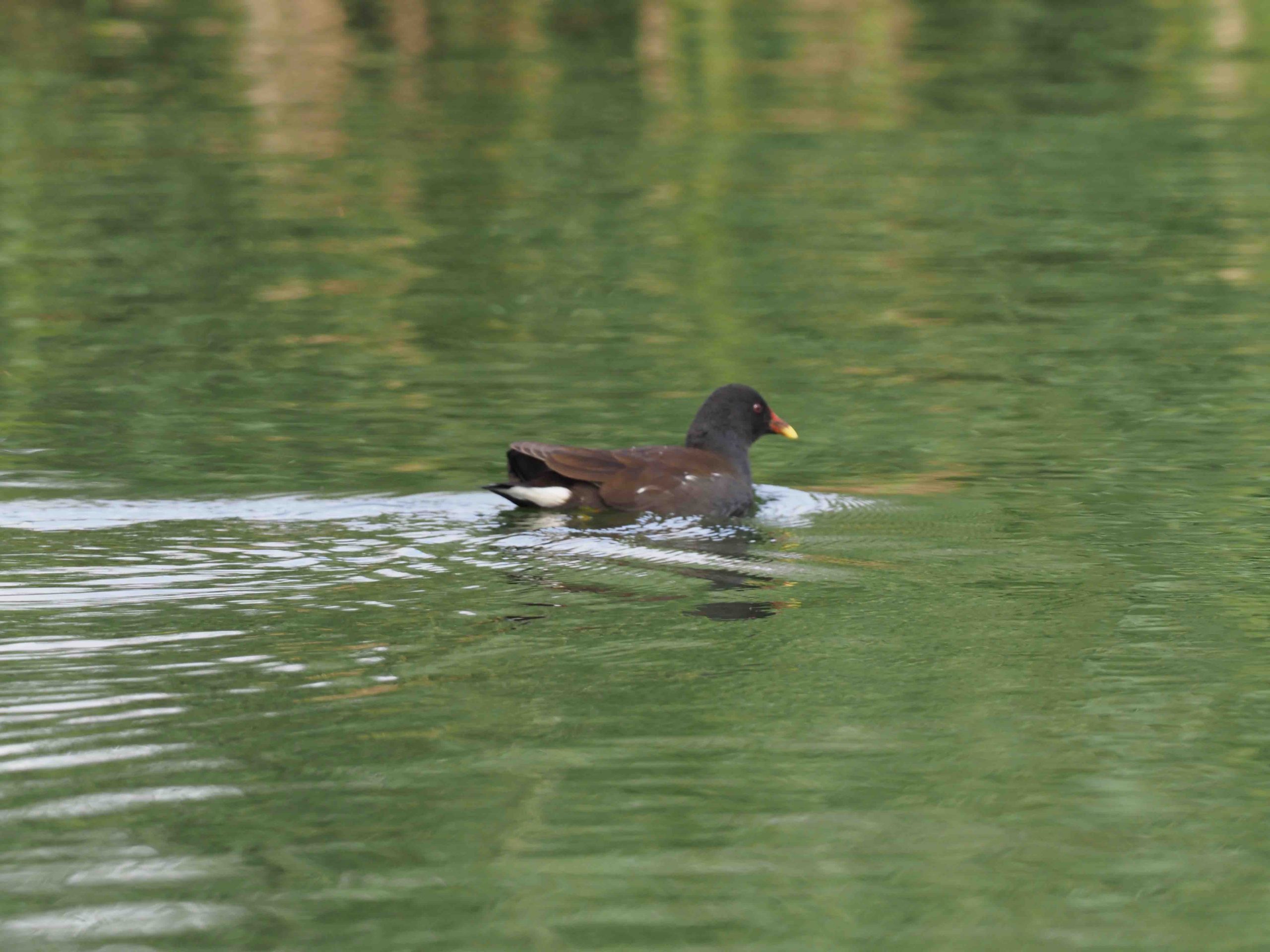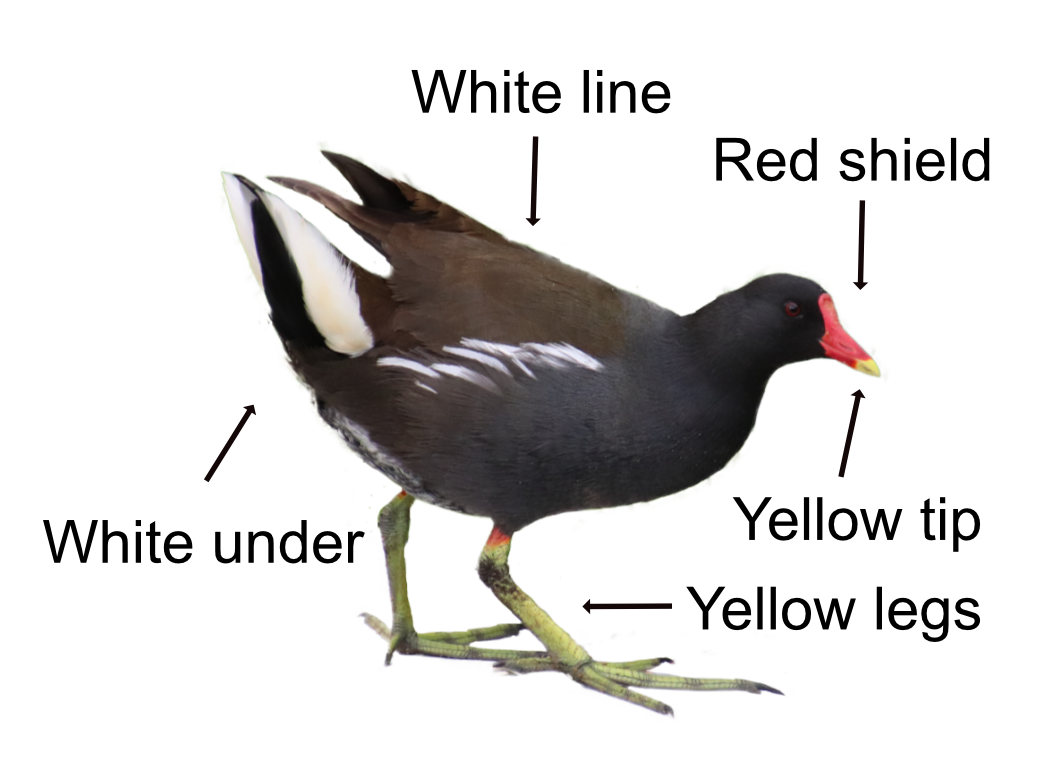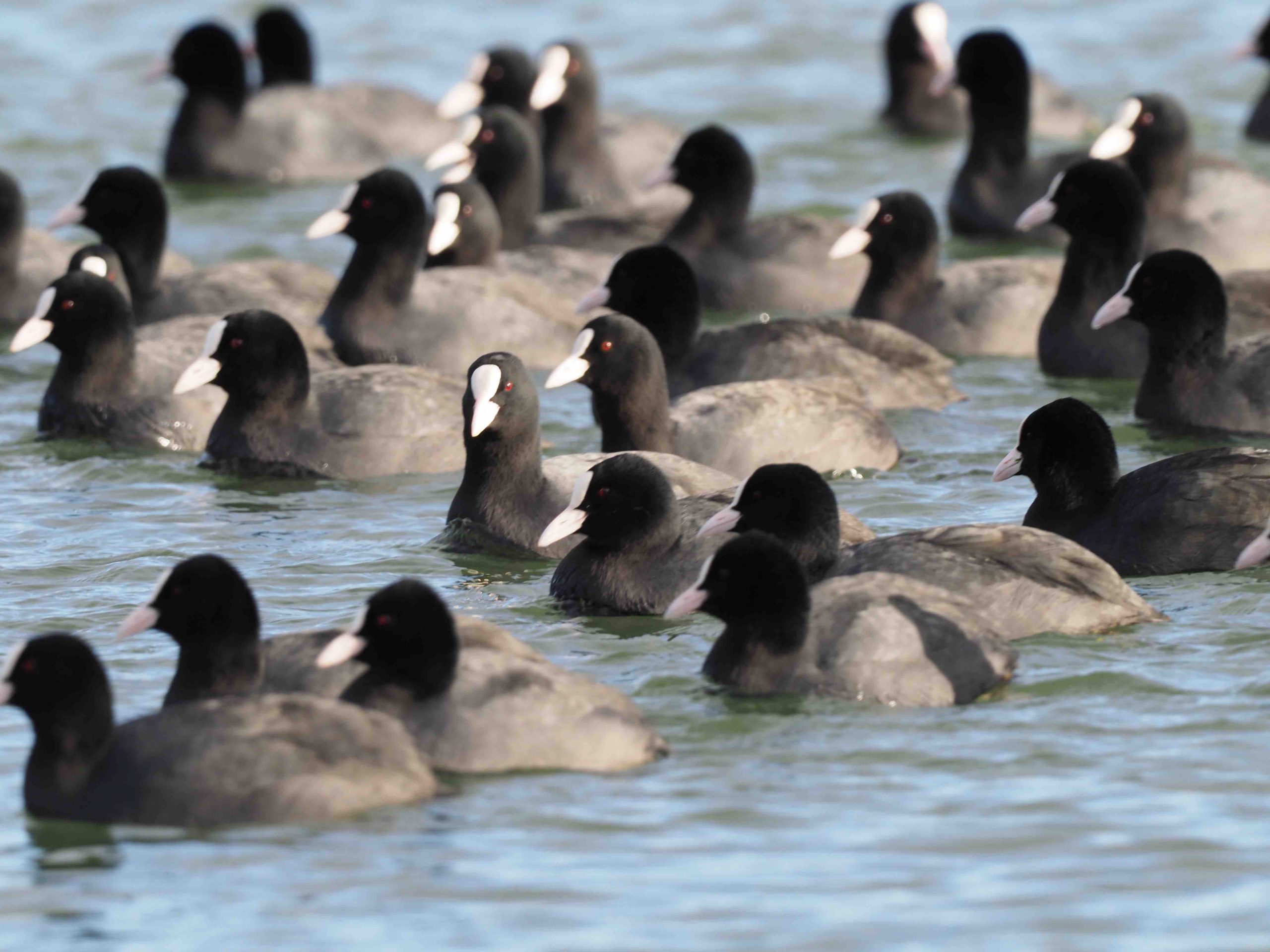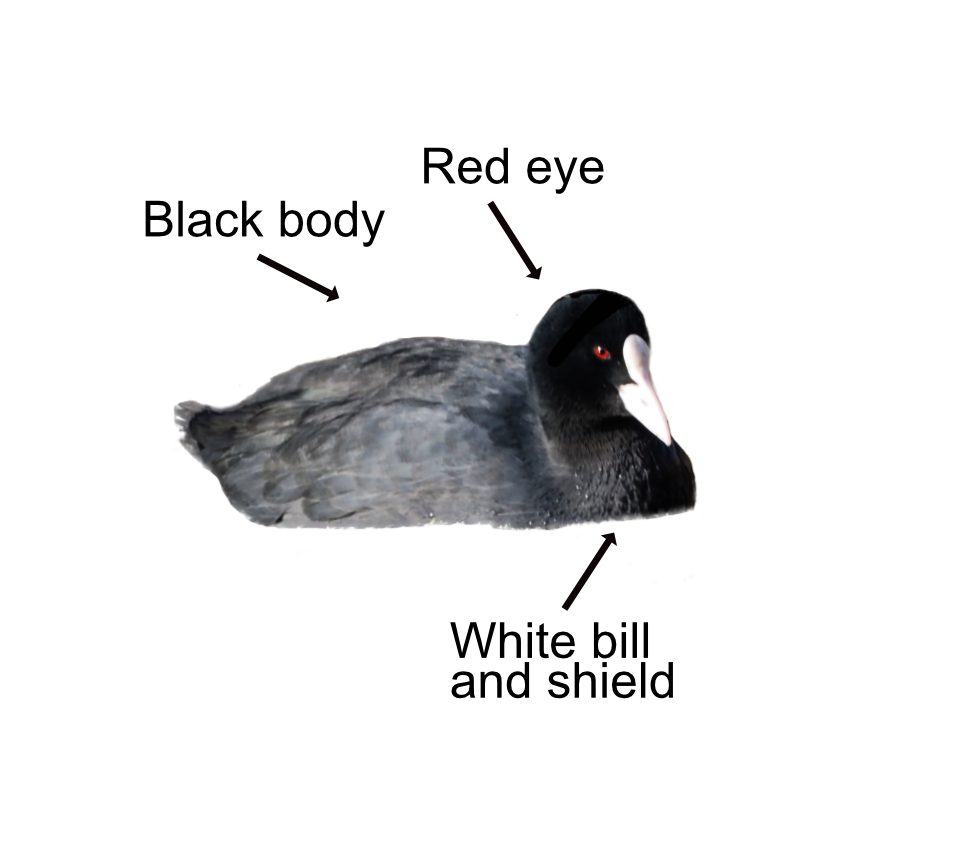
Moorhen is a corruption of 'mere hen' and where there is fresh water you will find a Moorhen. They like reed beds, farm ponds, ditches, lakes, and reservoirs. The only areas they avoid are fast-flowing rivers or pools with little vegetation as skulking is their thing.
The Moorhen's back is black brown while their head and underparts are blue grey. They have a red frontal shield with a red and yellow bill (think red hen to distinguish it from a Coot). There is a ragged white line along the sides of the body and white under the tail. Their feet and legs are yellowy green. When swimming, they jerk their heads backwards and forwards, like it is a big effort (which it is as they don't have webbed feet), while constantly flicking their tails. They tend to run across the water when scared and use this technique to take off, though generally flying is not their thing. Their long legs stick out the back once airborne, which is not a good look. For a brief period, somewhere between June and August, they are flightless while they moult. Moorhens have a wide range of calls. The most familiar is a sharp "BRROOK!"
A lot of a Moorhen's time is spent among waterside plants and on the bank looking for food. They will eat berries, pond weed, snails, insects, small fish, and even the eggs of other birds.

Early spring, around March, the male Moorhen builds several display platforms on the water where he can show off to the girls. Once he has attracted a female, the happy couple will turn one of these platforms into a nest. The nest is made of dead reeds and other plant matter. Both proud parents incubate the 5-9 eggs which hatch after 21 days. Soon after hatching, the youngsters are moved to a brood nest to confuse any would be predators. At 25 days, the young Moorhens can look after themselves but continue to be pampered by mum and dad until they can fly at around 45 days. Even after this, youngsters from the early broods hang around to help out with later broods and can stay with the family for up to 3 months. Moorhens will usually have two or three broods in a season.
The Moorhen is resident with 240,000 pairs in Britain, which rises to 320,000 pairs in winter as birds from Northern Europe pop over to try out our weed. Moorhens need lots of bankside vegetation for food and cover, so making waterways tidy is not a great help to them. Their Latin name is 'gallinula chloropus' where 'gallinula' is Latin for 'small hen' and 'chloropus' is from the Greek 'khloros' meaning green or yellow and 'pous' for 'foot'. So we have 'small hen with yellow feet'. Other English local names include waterhen and swamp chicken. Not very nice names for the poor Moorhen.
Moorhen video courtesy of Avibirds.com

